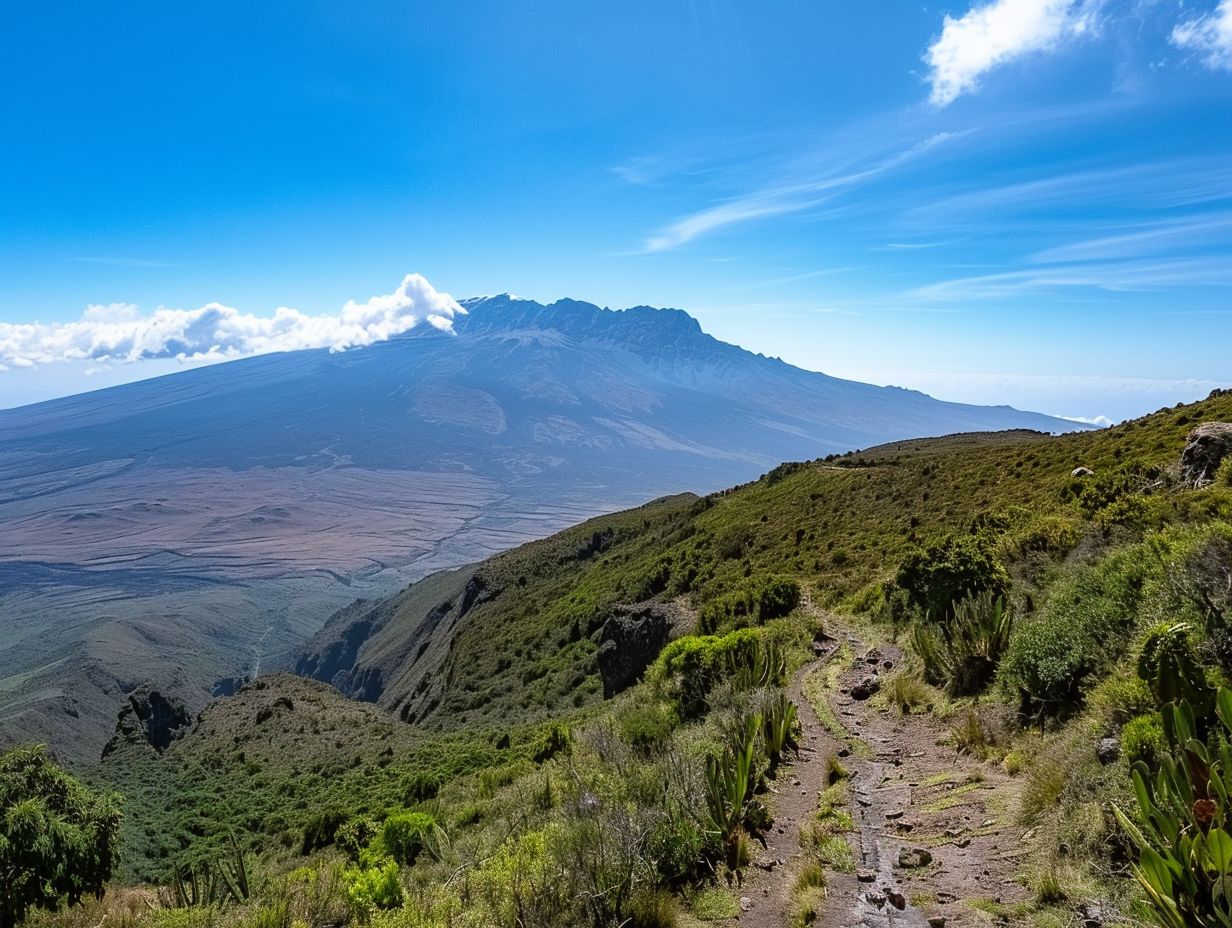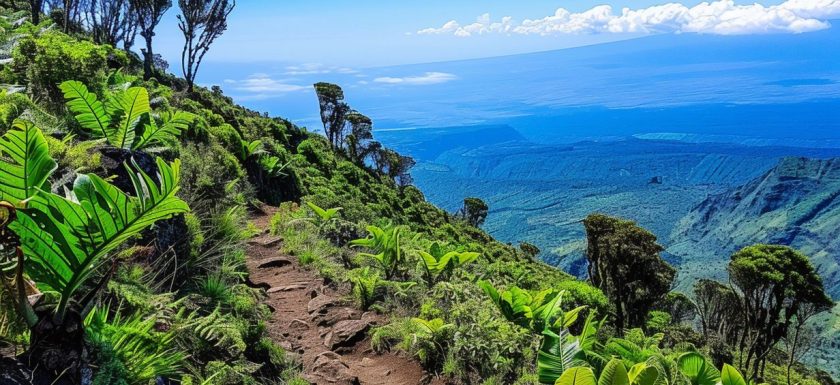
Are you ready to embark on a thrilling adventure to the legendary Kilimanjaro Mountain?
We will explore the Machame Route, one of the most popular paths to the summit.
From the overview of the route to the day-by-day itinerary and tips for a successful climb, we have everything you need to know to prepare for this epic journey.
Lace up your boots and get ready to conquer the majestic Kilimanjaro through the Machame Route!
Key Takeaways:
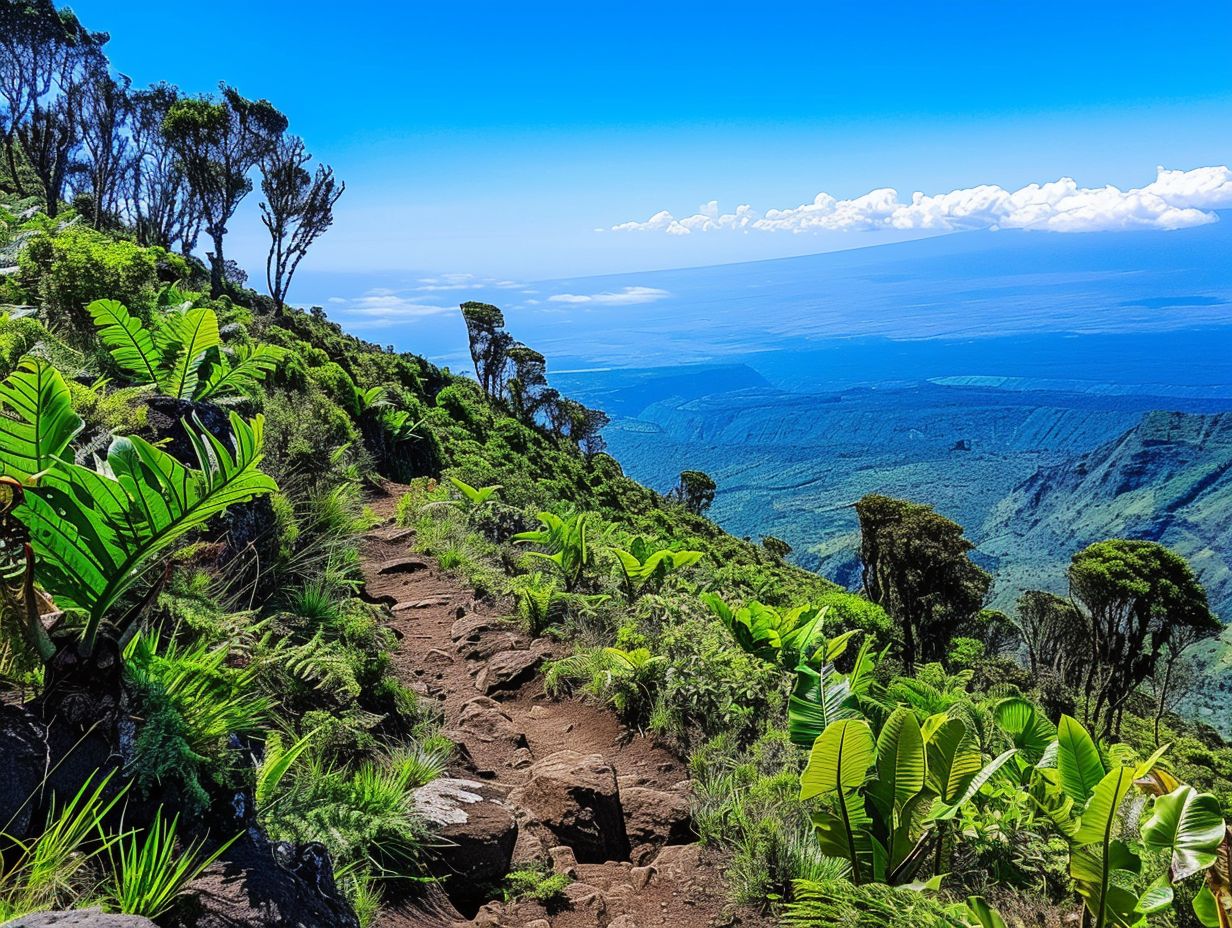
- The Machame Route is one of the most popular routes to summit Mount Kilimanjaro.
- Physical and mental preparation are crucial for a successful climb on the Machame Route.
- Proper acclimatization strategies, hydration, and nutrition are essential for a safe and enjoyable climb on the Machame Route.
Overview of the Machame Route
The Machame Route is one of the most scenic and popular trails on Kilimanjaro, known for its diverse landscapes and challenging climb.
Located on the southern side of Mount Kilimanjaro, the Machame Route offers climbers a remarkable journey through lush rainforests, alpine meadows, moorlands, and arctic desert landscapes.
Often referred to as the ‘Whiskey Route’ due to its more demanding nature compared to the ‘Coca-Cola Route’, it provides adventurers with a thrilling experience as they navigate steep ridges and multiple climate zones on their way to Uhuru Peak, the highest point in Africa.
What is the Machame Route?
The Machame Route, also known as the ‘Whiskey Route’, is a popular Kilimanjaro trail that offers stunning views and diverse landscapes to climbers.
The Machame Route starts at Machame Gate, located on the southern slope of Mount Kilimanjaro in Tanzania. This route is often favored for its breathtaking scenery, passing through lush rainforests, alpine meadows, and rocky terrain on the way to the summit.
One of the notable landmarks along the Machame Route is the Shira Plateau, a vast high-altitude desert plateau with expansive views of the surrounding landscapes. As climbers ascend higher, they encounter the iconic Barranco Wall, a challenging and thrilling rock scramble that adds an adventurous twist to the journey.
What sets the Machame Route apart from other trails is its varied terrain, which provides climbers with a diverse range of experiences. From navigating dense forests to traversing volcanic rock formations, adventurers on this route are treated to a multi-faceted adventure.
Why Choose the Machame Route?
Climbers choose the Machame Route for its challenging terrain, stunning campsites, and higher summit success rates compared to other routes on Kilimanjaro.
One of the main reasons climbers are drawn to the Machame Route is its reputation as the most physically demanding route, providing a true test of endurance and skill. The varied landscapes, from lush rainforests to alpine deserts, offer a unique adventure with each step taken towards the summit. The longer duration of the Machame Route allows for better acclimatization, reducing the risk of altitude sickness and increasing the chances of a successful summit attempt.
Preparation for the Machame Route
Proper preparation is key for conquering the Machame Route, including physical training, essential gear acquisition, and obtaining necessary permits for the climb.
Before embarking on this challenging trek, it is vital to focus on enhancing physical fitness through regular cardio and endurance workouts. Strengthening leg muscles, core stability, and improving overall flexibility will significantly help during the ascent.
Equally important is acquiring the right gear and equipment for the journey. This includes comfortable hiking boots, moisture-wicking clothing, a sturdy backpack, a warm sleeping bag, and essential items like a headlamp, trekking poles, and a reliable water bottle.
As you prepare your equipment, it’s essential to also begin the process of obtaining the required permits. Research the latest regulations and secure necessary documents well in advance to ensure a smooth start to your Machame Route adventure.
Physical Preparation
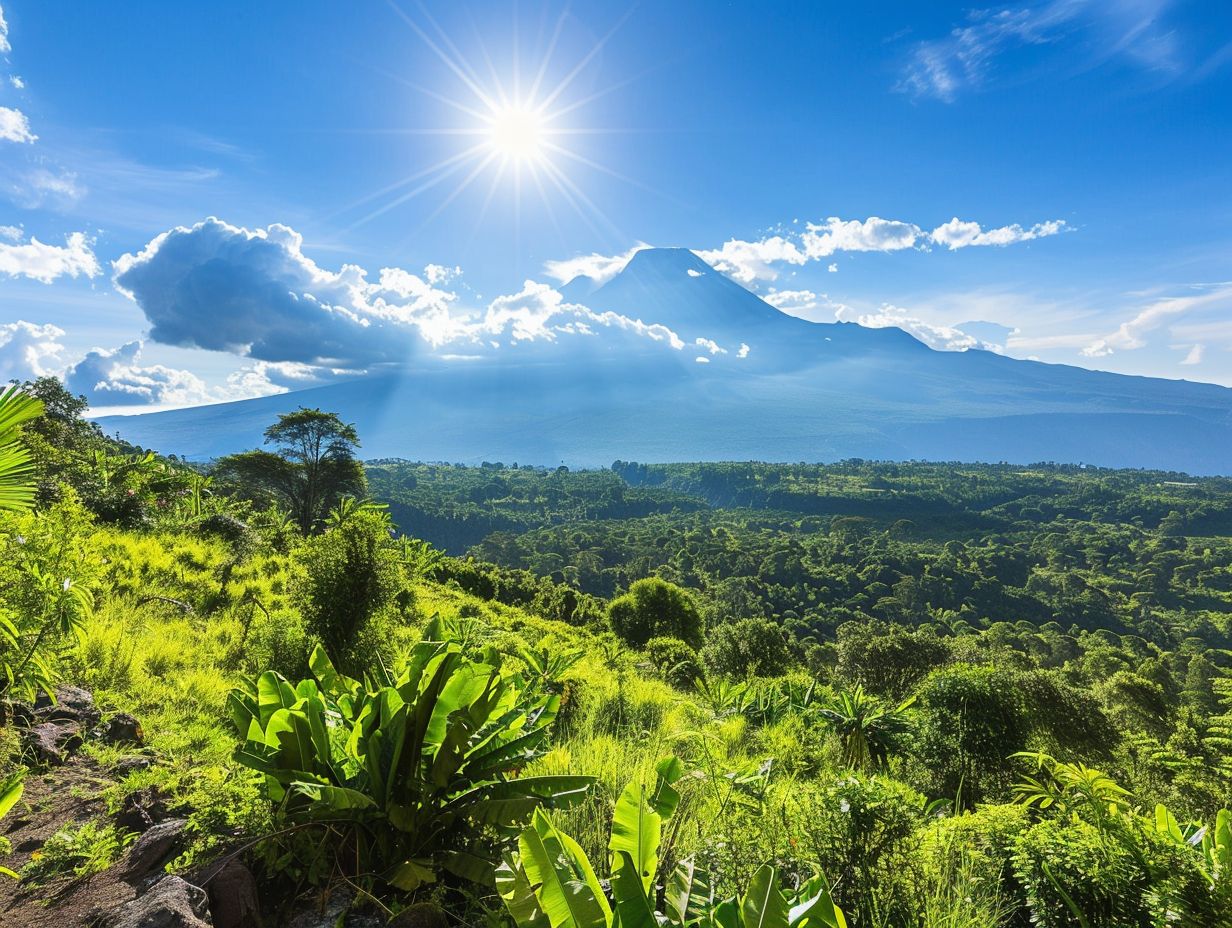
Physical preparation for the Machame Route involves endurance training, cardiovascular exercises, and altitude simulation to help climbers acclimate to the challenging conditions.
Climbers preparing for the Machame Route should focus on a well-rounded training regimen that includes long-distance running, hiking with weighted packs, and interval training to build stamina and endurance.
- Cardiovascular exercises like cycling, swimming, or high-intensity interval training can help improve heart and lung function crucial for the strenuous demands of high-altitude climbing.
- Altitude simulation through techniques such as sleeping in altitude tents or spending time at higher elevations before the trek can aid in acclimatization and reduce the risk of altitude sickness.
Gear and Equipment
Essential gear and equipment, such as sturdy hiking boots, warm clothing, and high-altitude gear, are crucial for climbers embarking on the Machame Route to ensure safety and comfort during the ascent.
Aside from hiking boots, it’s vital to pack moisture-wicking clothing to regulate body temperature and keep dry in changing weather conditions. Other essential items include a durable backpack, trekking poles for stability, and a reliable headlamp for nighttime visibility at camp.
Climbers must bring a sleeping bag rated for cold temperatures, a lightweight tent for shelter, and a well-insulated sleeping pad for restorative nights at high altitudes.
Specialized high-altitude gear like crampons, ice axes, and helmets are essential for certain sections of the route requiring technical proficiency. It’s also recommended to carry a compact stove, food supplies, water purification tablets, and a hydration system to stay nourished and hydrated throughout the journey.
Planning and packing meticulously for the Machame Route climb can significantly contribute to a successful and rewarding experience amidst the breathtaking landscapes of Mt. Kilimanjaro.
Permits and Fees
Securing permits and paying the necessary fees, including those for Kilimanjaro National Park and tour operators like Kandoo Summits, is essential for climbers planning to undertake the Machame Route.
When applying for permits, climbers must fill out the official forms provided by the park authorities, detailing their personal information, trekking dates, and intended climbing route. The fees for the permits vary depending on the season and whether climbers opt for private or group expeditions, with peak season charges generally higher.
Climbers may need to present a medical certificate confirming their fitness level and insurance coverage for high-altitude trekking. It’s crucial to have these documents in order to avoid any delays or issues during the permit application process.
Day-by-Day Itinerary of the Machame Route
The day-by-day itinerary of the Machame Route outlines the journey from Machame Gate to Uhuru Peak, passing through picturesque campsites and breathtaking landscapes along the way.
On the first day, adventurers start their journey at Machame Gate, entering the lush rainforest with a steady climb towards Machame Camp. The next day sees a hike through the moorland to Shira Camp, providing stunning views of Mount Meru. Day three brings hikers to the rocky terrain of Lava Tower before descending to Barranco Camp for a good night’s rest.
Day four involves the famous Barranco Wall climb, followed by a trek to Karanga Camp nestled in a valley. The next day’s hike to Barafu Camp marks the final ascent to the summit, with weary but determined climbers prepping for the midnight push to Uhuru Peak.
Day 1: Machame Gate to Machame Camp
Day 1 of the Machame Route journey involves trekking from Machame Gate to Machame Camp, passing through lush rainforests and diverse flora and fauna.
As trekkers depart from the Machame Gate, the path leads through a verdant expanse, enveloped by a canopy of emerald leaves dappled with sunlight trickling through the foliage. The trail meanders amidst towering trees adorned with hanging moss, creating an ethereal atmosphere. The air is filled with the melodious chirping of birds, adding a symphonic note to the trek.
Roots of ancient trees sprawl across the trail, offering natural stepping stones in this enchanting woodland realm. Slippery sections can present a challenge, as hikers navigate over moss-covered rocks and tree roots, requiring careful footing and balance.
Day 2: Machame Camp to Shira Camp
On Day 2, climbers trek from Machame Camp to Shira Camp, ascending to higher altitudes and transitioning into the alpine desert zone of Kilimanjaro.
The journey from Machame Camp to Shira Camp is a crucial stage in the Kilimanjaro trek, marking a significant elevation gain and acclimatization process for climbers. As they venture towards Shira Camp, at an elevation of around 3,840 meters, the landscape undergoes a noticeable transformation. The lush rainforest gradually gives way to a more barren, rocky terrain characteristic of the alpine desert zone.
This shift in scenery not only offers breathtaking panoramic views but also poses challenges of acclimatization due to the altitude variations. Climbers must pace themselves, hydrate adequately, and pay close attention to any signs of altitude sickness to ensure a safe and successful ascent.
Day 3: Shira Camp to Barranco Camp
Day 3 entails the trek from Shira Camp to Barranco Camp, a critical stage for acclimatization as climbers navigate the Barranco Wall and stunning vistas of Kilimanjaro.
As climbers ascend towards Barranco Camp, they are met with the challenging yet exhilarating Barranco Wall, a steep climb that requires careful footwork and the use of hands for balance. This section tests the climbers’ physical endurance and mental resilience, offering a taste of the technical challenges that lie ahead.
The efforts are richly rewarded with breathtaking panoramic views of the surrounding landscape, including the expansive Shira Plateau and the distant peaks of Mount Meru on clearer days. The ever-changing scenery serves as a motivating backdrop as climbers continue their ascent, pushing through the gradual acclimatization process.
Day 4: Barranco Camp to Karanga Camp
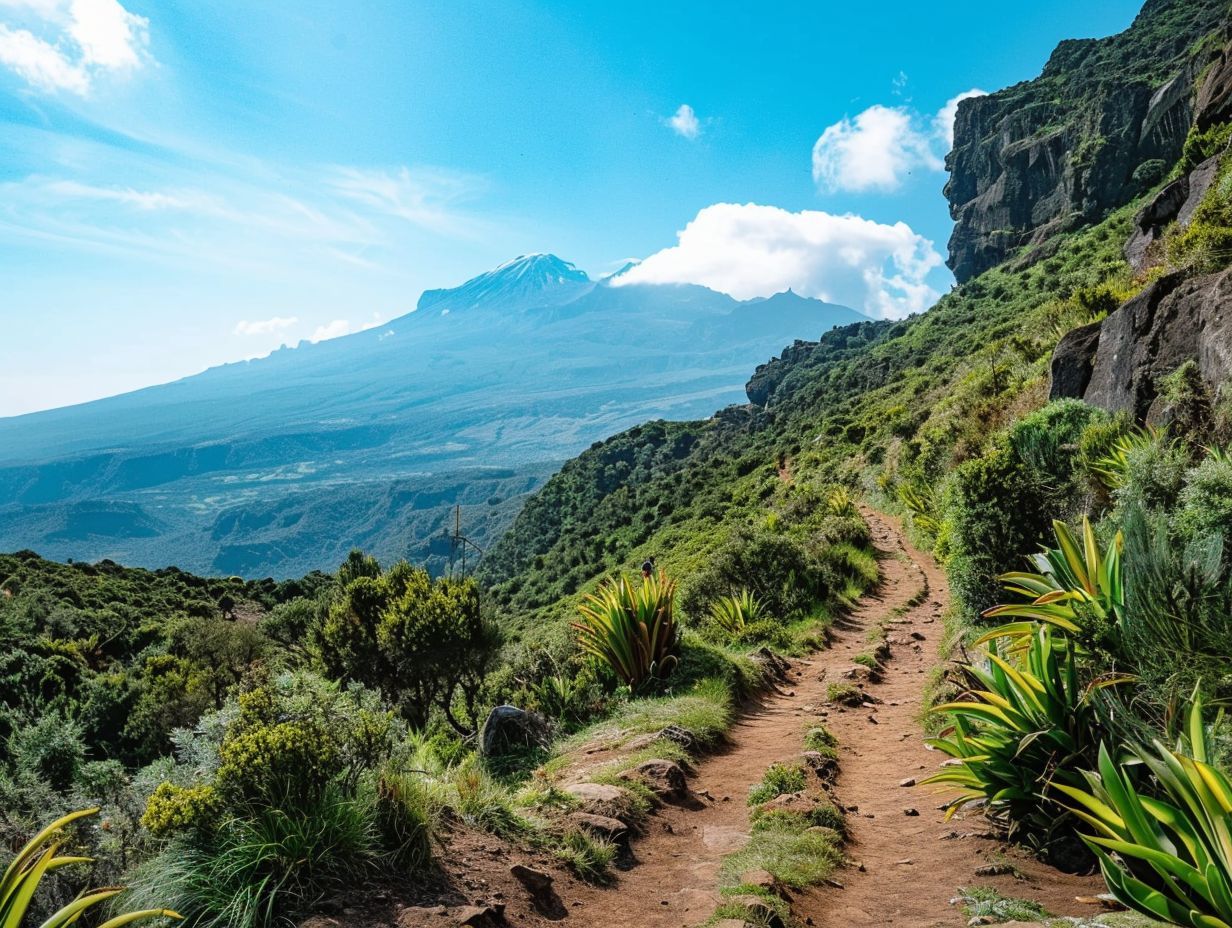
Day 4 involves the trek from Barranco Camp to Karanga Camp, where climbers navigate challenging terrain and gain further altitude in preparation for the summit push.
The segment from Barranco Camp to Karanga Camp presents a mix of boulders, loose scree, and rocky sections that demand steady footing and careful navigation. Climbers must negotiate steep inclines and rocky steps, requiring a combination of physical endurance and mental focus. With the altitude gradually increasing, it is crucial for climbers to pace themselves and acclimatize properly to prevent altitude-related issues.
Strategic rest points scattered along the trail offer climbers opportunities to catch their breath and admire the awe-inspiring views of the surrounding peaks such as Kibo and Mawenzi. These brief respites also allow climbers to refuel and stay hydrated, ensuring they maintain their energy levels for the demanding ascent ahead.
Day 5: Karanga Camp to Barafu Camp
On Day 5, climbers trek from Karanga Camp to Barafu Camp, the last stop before the summit push, where they rest and prepare for the challenging ascent to Uhuru Peak.
The journey from Karanga Camp to Barafu Camp is a crucial transition that marks the beginning of the final push towards the summit of Mount Kilimanjaro. This part of the trek provides climbers with a well-needed rest and acclimatization period, allowing their bodies to adjust to the increasing altitude. Rest becomes paramount at this stage, aiding in recovery and replenishing energy levels for the strenuous climb ahead.
Besides rest, nutrition plays a vital role in ensuring climbers are adequately fueled for the demanding ascent. A balanced diet rich in carbohydrates and proteins is essential to sustain the physical exertion required for reaching Uhuru Peak.
Equally important is the mental readiness of climbers as they prepare to face the challenges of summit night. The mental fortitude gained during the journey from Karanga Camp to Barafu Camp sets the tone for the successful completion of the climb to the iconic peak.
Day 6: Barafu Camp to Uhuru Peak to Mweka Camp
The summit day begins with the trek from Barafu Camp to Uhuru Peak, the highest point on Kilimanjaro, marking a moment of triumph and success for climbers who conquer the peak.
The journey unfolds as climbers set out under the cloak of darkness, their headlamps creating a trail of light on the icy terrain. As the sun gradually rises, painting the sky in hues of orange and pink, a sense of anticipation and excitement fills the air.
The arduous ascent demands mental fortitude and physical endurance, with each step bringing them closer to their goal. Amidst the extreme cold and thin air, summit hopefuls draw strength from their fellow climbers, sharing words of encouragement and support.
Tips for a Successful Machame Route Climb
Achieving success on the Machame Route requires effective acclimatization strategies, proper hydration and nutrition, and thorough physical and mental preparation for the challenging ascent.
Acclimatization is key on the Machame Route to prevent altitude sickness, and climbers should plan for gradual ascents to allow their bodies to adjust. Proper hydration involves regularly drinking water and electrolyte-rich fluids to combat the high-altitude conditions.
In terms of nutrition, high-energy snacks like nuts, dried fruits, and protein bars can provide the necessary fuel for the strenuous trek. Mental readiness is crucial, so climbers should cultivate a positive mindset and be prepared for the physical and emotional demands of the climb.
Acclimatization Strategies
Effective acclimatization strategies, such as gradual altitude gain, hydration, and rest days, are vital for climbers to adapt to the high altitudes along the Machame Route and reduce the risk of altitude sickness.
The Machame Route, known for its stunning scenery and challenging terrains, requires climbers to pace themselves to allow their bodies to adjust gradually to the increasing altitude.
One of the key aspects of acclimatization is to drink plenty of water to stay hydrated, aiding in combating altitude-induced dehydration and headaches. It is advisable to include rest days in the itinerary, allowing climbers to recover and acclimatize effectively.
Following a proper acclimatization schedule that includes gradual climbs with breaks at different elevations can significantly improve climbers’ chances of successfully reaching the summit and enjoying the journey.”
Hydration and Nutrition
Maintaining proper hydration levels and nutrition intake is essential for climbers on the Machame Route to sustain energy, prevent dehydration, and optimize physical performance during the ascent.
When climbing the challenging terrain of the Machame Route, climbers must be mindful of their hydration strategies. It’s crucial to drink plenty of water throughout the day, especially at higher altitudes where the risk of dehydration is higher. Electrolyte-rich beverages can also help replenish minerals lost through sweat.
As for meal planning, climbers should focus on consuming a balanced diet rich in carbohydrates, proteins, and healthy fats to fuel their bodies for the rigorous journey ahead. Packing energy snacks like nuts, dried fruits, and granola bars can provide quick boosts of energy during rest stops. Proper nutrition and hydration will not only enhance performance but also aid in acclimatization and overall well-being while trekking Mount Kilimanjaro via the Machame Route.
Physical and Mental Preparation
Comprehensive physical and mental preparation is crucial for climbers tackling the Machame Route, involving strength training, mental resilience building, and positive mindset cultivation for a successful climb.
In terms of physical readiness, climbers need to focus on building core strength, enhancing cardiovascular endurance, and improving overall flexibility.
Engaging in a balanced training regimen that includes cardio exercises, strength training, and specific muscle group workouts can significantly enhance a climber’s physical capabilities, aiding in navigating the challenging terrain of the Machame Route with agility and stamina.
On the mental front, climbers must develop resilience to cope with the strenuous demands of the climb. Building mental toughness through meditation, visualization techniques, and stress management practices can help climbers stay focused, maintain composure in challenging situations, and push through mental barriers that may arise during the ascent.
Fostering a positive mindset is paramount for climbers tackling the Machame Route. Cultivating optimism, perseverance, and a ‘can-do’ attitude not only boosts morale but also fuels determination and resolve, crucial for overcoming obstacles and staying motivated in the face of adversity during the climb.
Frequently Asked Questions
